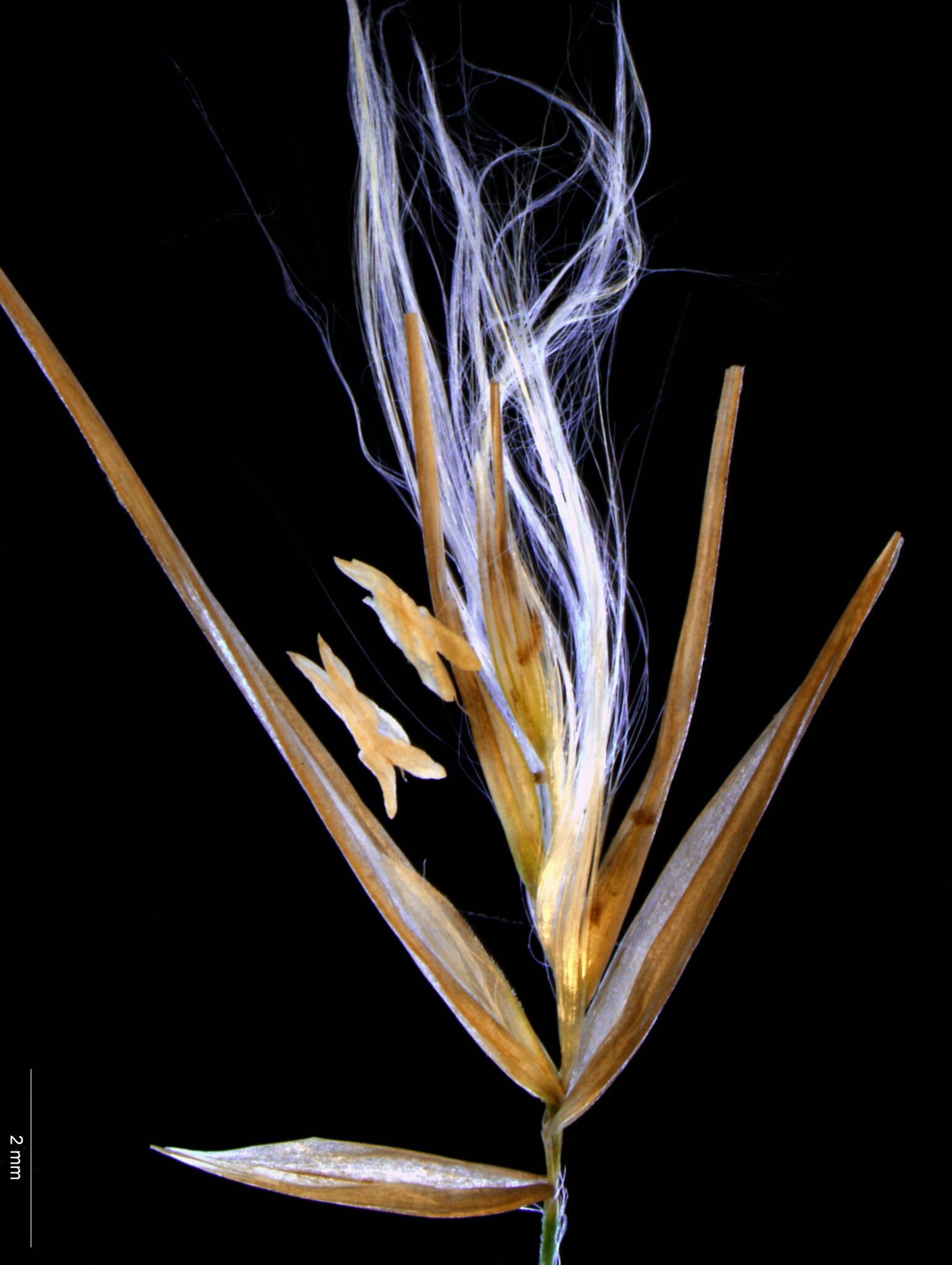
Greek – phragmites, growing in hedges as the plants clump together at the water’s edge.
Tall, rhizomatous and stoloniferous perennial reed with erect stems. Leaves along the axis and with flat broad, blades, deciduous. Leaf blade rolled in bud. Ligule a fringe of hairs. Inflorescence a mostly silky plume-like open or dense panicle. Spikelets silky, 2-10 flowered, lowermost male or sterile. Glumes shorter than the florets, persisting after florets fall, lower and upper glumes 3-5 nerved. Lower florets longer than the upper ones. Lemma slender with an awn-like tip, 1-3 nerved, hairless, but subtended by a tuft of silky hairs. Palea 2-nerved.
Common along the edges of lowland waterways. Occasionally used in horticulture around lakes and large water bodies for the attractive foliage and plumed flower heads. P. australis and P. karka are also significant weed species.
Seed, vegetative.
The leaves of P. australis are used for matting and other textile work, the stems harvested and pulped as a source of fuel, cardboard and even fertiliser, and the fleshy rhizomes are used as food by kooris. The grains are used locally as food, as are the new shoots.
Waterside plant, the plumed flower heads (with silky spikelets) on stems mostly 1-3 m tall.
3 cosmopolitan aquatic species, 2 native to Australia.
Source: (2005). Poaceae. In: . Horticultural Flora of South-eastern Australia. Volume 5. Flowering plants. Monocotyledons. The identification of garden and cultivated plants. University of New South Wales Press.
